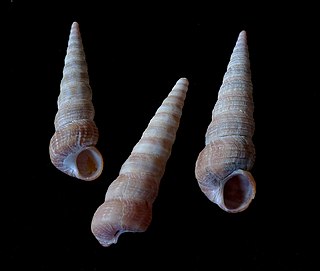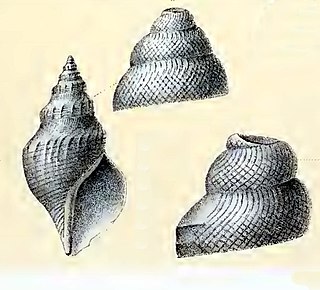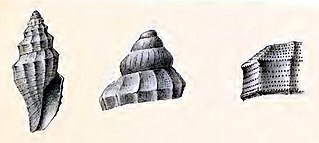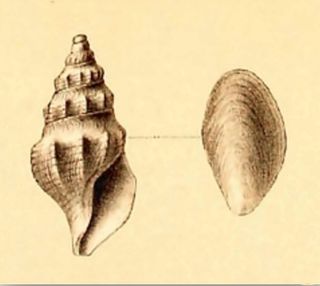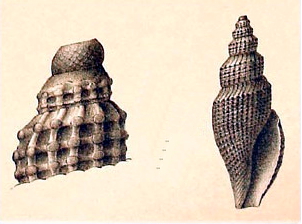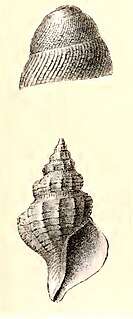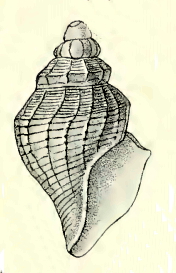| Asperdaphne ula | |
|---|---|
| Scientific classification | |
| Kingdom: | Animalia |
| Phylum: | Mollusca |
| Class: | Gastropoda |
| Clade: | Caenogastropoda |
| Clade: | Hypsogastropoda |
| Clade: | Neogastropoda |
| Superfamily: | Conoidea |
| Family: | Raphitomidae |
| Genus: | Asperdaphne |
| Species: | A. ula |
| Binomial name | |
| Asperdaphne ula (Watson, 1881) | |
| Synonyms [1] | |
| |
Asperdaphne ula is a species of sea snail, a marine gastropod mollusk in the family Raphitomidae. [1]
In biology, a species is the basic unit of classification and a taxonomic rank of an organism, as well as a unit of biodiversity. A species is often defined as the largest group of organisms in which any two individuals of the appropriate sexes or mating types can produce fertile offspring, typically by sexual reproduction. Other ways of defining species include their karyotype, DNA sequence, morphology, behaviour or ecological niche. In addition, paleontologists use the concept of the chronospecies since fossil reproduction cannot be examined.

Sea snail is a common name for slow moving marine gastropod molluscs usually with visible external shells, such as whelk or abalone. They share the taxonomic class Gastropoda with slugs, which are distinguished from snails primarily by the absence of a visible shell.
Family is one of the eight major hierarchical taxonomic ranks in Linnaean taxonomy; it is classified between order and genus. A family may be divided into subfamilies, which are intermediate ranks between the ranks of family and genus. The official family names are Latin in origin; however, popular names are often used: for example, walnut trees and hickory trees belong to the family Juglandaceae, but that family is commonly referred to as being the "walnut family".
Contents
Robert Boog Watson wrote the species description in 1881. The specific name ula name comes from the Greek word οὖλος 'crisp'. Its type locality is north east of New Zealand at 37°34′S179°22′E / 37.567°S 179.367°E at a depth of 700 fathoms (4,200 ft; 1,300 m). [2]

Rev Dr Robert Boog Watson BA FRSE LLD was a Scottish malacologist and minister of the Free Church of Scotland best known as the author of the report on the Scaphopoda and Gastropoda collected during the H.M.S. Challenger expedition to survey the world's oceans from 1873 to 1876. Watson also described various Opisthobranchia from Madeira.
A species description is a formal description of a newly discovered species, usually in the form of a scientific paper. Its purpose is to give a clear description of a new species of organism and explain how it differs from species which have been described previously or are related. The species description often contains photographs or other illustrations of the type material and states in which museums it has been deposited. The publication in which the species is described gives the new species a formal scientific name. Some 1.9 million species have been identified and described, out of some 8.7 million that may actually exist. Millions more have become extinct.
In zoological nomenclature, the specific name is the second part within the scientific name of a species. The first part of the name of a species is the name of the genus or the generic name. The rules and regulations governing the giving of a new species name are explained in the article species description.

